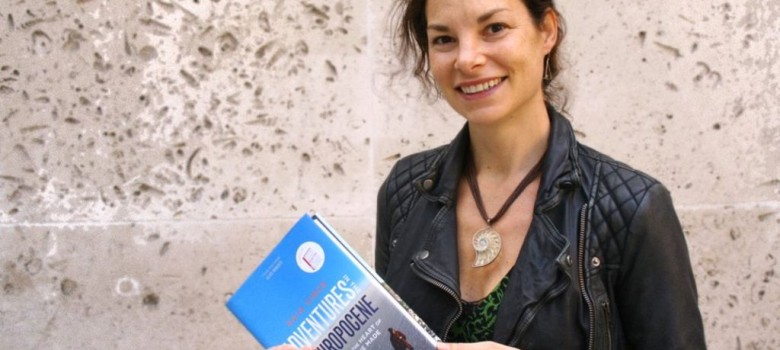
Last week I reviewed two children’s books for TheGreenAge Christmas book review. Giving those of you buying presents for children this year some positive ideas. My little girl is still is still loving the activities introduced in the ‘This is a Totally Rubbish’ book by Maggie Bolger . This morning we made her a car out of an old cardboard box, toilet rolls and some homemade paint……very Blue Peter.
This week I am going to review Adventures of Athropocene – winner of the prestigious Royal Society Winton Prize.
Adventures in the Athropocene written by Gaia Vince
I can hand-on-heart say that I haven’t read such an impactful non-fiction book before. It is brilliant. Please buy it for any scientists in your family, anyone with an interest in climate change and its effects, especially the skeptics out there!
Gaia Vince took two years out from journalism to write the book. She travelled with her husband to remotes parts of the world to meet some truly inspirational human beings. She divides the book into chapters addressing difference geographical area of the planet.
>>> Buy Adventures in the Athropocene now! <<<
The initially chapter got me worried that I was about to read another depressing book about how the world is doomed due to humans terrible behaviour. However, the difference with this book is after it has introduced the problem facing that region, it then gives a glimmer of hope, by introducing us to some projects that are being undertaken locally. Ideas that could genuinely change the way that people live whilst prevention world wide famine and the extinction of millions of species.
My personal favourites are the formation of artificial glaciers in Nepal, a term they describe as ‘glacier grafting’. Currently due to climate change the glaciers are retreating at an alarming rate. This means the vital run-off essential to irrigate the crops is insufficient or in some cases non-existent. The communities Gaia visited in Nepal are starting now to rely on government grain rations or worse driving families to abandon their homes in search of work in towns and cities.
However a retired engineer called Norphel has slowly introduced the idea of making their own glaciers. He devised a method to slow the winters waste water by constructing some stone embankments on the north face of the mountain sides. This water started to freeze and start to pack into ice-sheets. By spring time the sun rises high enough to reach these frozen water storage areas and the ice begins to melt into storage tankers that can then be diverted to the farmers irrigation systems. Building them in a step-like manner higher and higher up the mountain means they melt in a successive pattern providing an extra month of water. Brilliant, made even more so when you realise this as been done with limited funds by locals fighting back to keep their communities sustainable.
Overall score 9/10
I would recommend this book to everyone – genuinely it was an absolute pleasure to read and I can completely understand why it won the Royal Society Winton Prize. It really did get me thinking and has changed the way I behave in terms of my own personal carbon footprint. Sobering in parts but on the whole inspiring.
Think we missed something? Do you have a different opinion?
Comment below to get your voice heard…












No Comments yet! Be the first one.